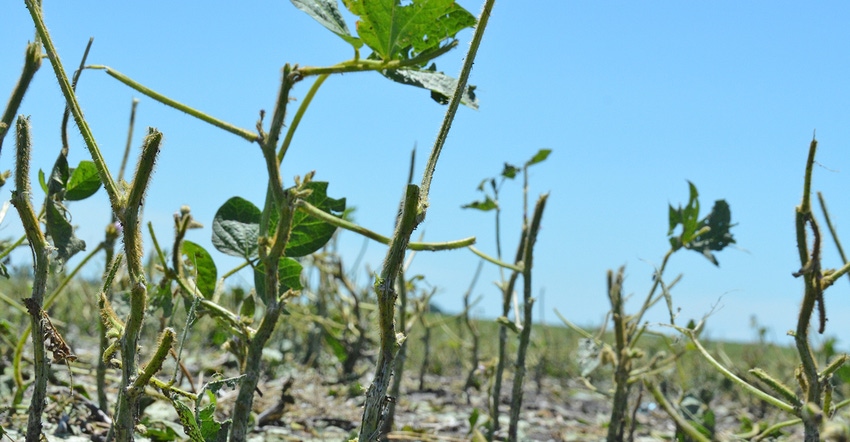April 24, 2018

Soybeans, dry beans, sunflowers and canola are affected differently by hail, says Han Kandel, North Dakota State University Extension agronomist.
He outlines what you can expect when broadleaf crops are hit:
Soybean and dry beans. The above-ground growing points of the soybean or dry bean plants are located at the top of the plant and dormant buds in the leaf axis. The tender growing points of soy and dry beans are easily damaged if hail takes place during the early growing season. Regrowth will not occur if the hail cuts the stem below the cotyledons, as the lowest growing points are located in the cotyledon leaf axils. However, if the plant is not too severely damaged above the cotyledon, it is possible for the plant to regrow from the axillary buds. The plant stems may be damaged or bruised by hail stones without killing the plant. Damaged and bruised stems often weaken the plant at these spots resulting in lodging if the stem tissue cannot support the weight of the plant later in the season. Also, plant stands are often reduced due to the hail damage. Nevertheless, if there are still enough evenly distributed plants left, the crop can still produce reasonable yields with a favorable remaining growing season.
Sunflowers. The tolerance of sunflower plant to hail depends on the intensity of the storm, hail size and the stage of the growth. Sunflower is least tolerant to hail during the seedling and budding stage, and more tolerant in the vegetative stage and after flowering. Direct damage early in the season can result in a stand loss. Indirect damage occurs from defoliation and severely bruised or broken stems. If the growing point is hit by hail and removed, sunflower plants will branch out and result in many small heads, which will not contribute to yield.
Canola. Hail damage in the seedling stage of canola can reduce stands by 50% and still produce acceptable yields. For example, a stand of 8 to 10 plants per square foot could even be reduced to 4 plants per square foot before yield is substantially reduced, assuming a growing season will favor branching, flower development and seed fill of the crop. Prior to bolting and flower development, canola can recover from hail damage, but canola plants require a substantial amount of energy to rebuild the lost leaf area. Hail injured canola plants in the late bolting or early flowering stages have the ability to produce additional branches and flower clusters.
Source: NDSU Crop and Pest Report
You May Also Like




